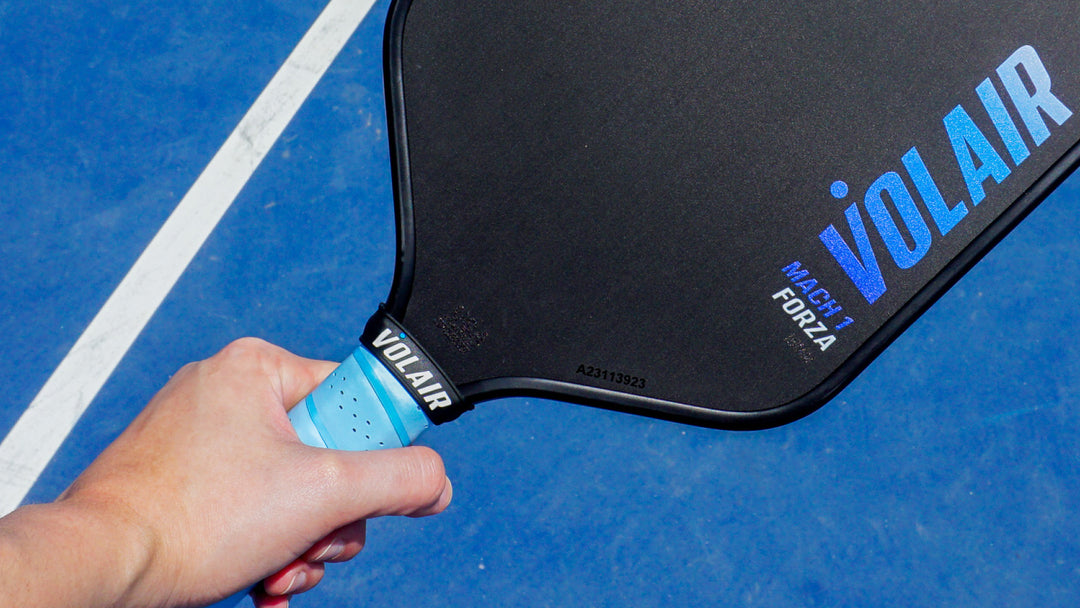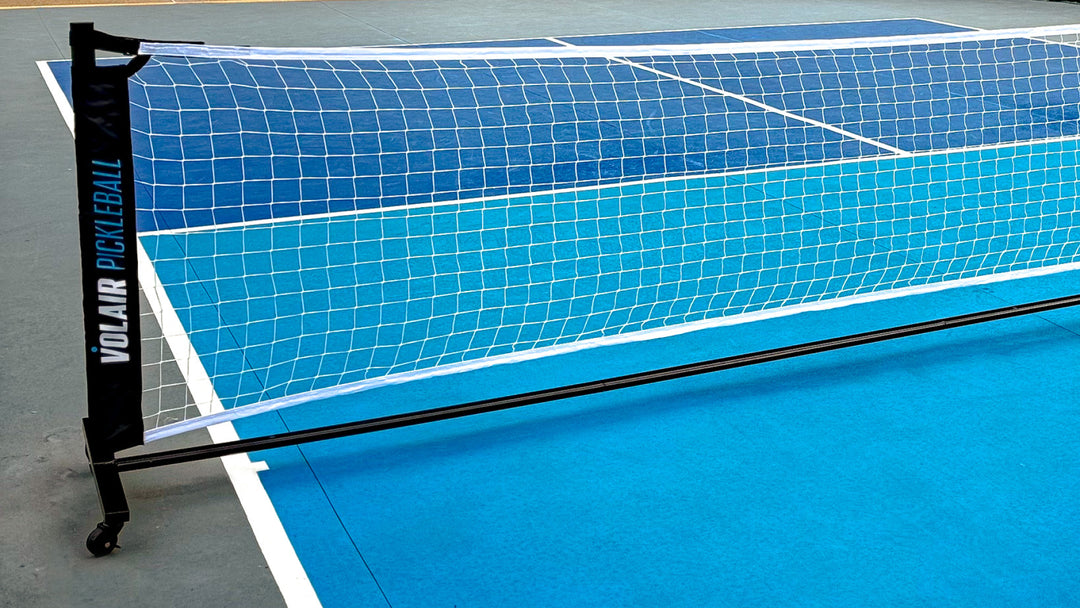The Complete Guide to Pickleball Game Rules and Guidelines
Pickleball, a dynamic racquet sport that combines elements of tennis, badminton, and table tennis, has been taking the world by storm. Whether you're a newcomer or a seasoned player looking to refine your skills, understanding the rules and guidelines of pickleball is essential for an enjoyable and competitive experience. In this comprehensive guide, we will delve into every aspect of the game, from court dimensions to advanced strategies, ensuring you have all the information you need to excel in pickleball.
What is Pickleball?
Pickleball, often described as the fastest-growing sport in America, is a racquet sport that was created in the mid-1960s, specifically in 1965 by three fathers in Washington State, USA, as a fun way to keep their families entertained during the summer. Pickleball is played on a rectangular court, and the objective is to score points by successfully hitting a ball over the net and into the opponent's side of the court. The sport is known for its accessibility, making it suitable for players of all ages and skill levels.
Court Dimensions and Playing Equipments
Pickleball Court Dimensions
A standard pickleball court measures 20 feet wide by 44 feet long, with specific markings that denote the service areas, non-volley zone (kitchen), and boundaries. The net is positioned at the center, dividing the court into two equal halves.
Pickleball Equipment
Pickleball equipment includes paddles, balls, and a net. Paddles are solid, typically made of composite materials, with perforated surfaces. The combined length and width, including any edge guard and butt cap, shall not exceed 24 inches (60.96 cm). The paddle length cannot exceed 17 inches (43.18 cm). There is no restriction on paddle thickness. The ball resembles a wiffle ball, featuring holes to reduce its speed. Nets for pickleball are shorter than those used in tennis, spanning 20 feet in width and 34 inches in height at the center.

Indoor vs. Outdoor Pickleball Courts
While the basic court dimensions remain the same, indoor and outdoor courts may differ in surface materials. Indoor courts often have wood or synthetic flooring, while outdoor courts use materials like asphalt or concrete. Outdoor courts are also susceptible to wind and weather conditions.
Basic Rules and Object of the Pickleball Game
The primary objective of pickleball is to score points by making your opponent commit a fault or mistake. Standard games are typically played to 11 points, with a winning margin of 2 points. In Major League Pickleball (MLP) format, games are played to 25 points (changed from 21 in 2024), also requiring a 2-point winning margin. In round robin play or tournament settings, games may be played to 15 points, with the same requirement to win by at least 2 points
Scoring, Only the serving team can score points in traditional pickleball, and a point is won on every rally. To serve, a player must be positioned behind the baseline, and the serve must clear the non-volley zone (kitchen). Points are scored when the receiving team commits a fault or when the serving team wins the rally. However, in Major League Pickleball (MLP) formatting, rally scoring is used, and the first team to reach 25 points wins the game, a rule change implemented in 2024.
Serving Rotation, In doubles play, each player on a team takes turns serving, starting with the player on the right-hand side of the court (even score) or left-hand side (odd score). In standard play, when a team wins a point while serving, the serving player switches sides with their partner. However, in Major League Pickleball (MLP) format, players and their teammates do not switch sides after each point won.
Side-Out, If the serving team faults, the opposing team gets the chance to serve. This is known as a "side-out," and the serving team loses its opportunity to score points until they regain the serve.
Serving Rules
Serving in pickleball is a critical aspect of the game and must be executed correctly to maintain a fair and competitive match.
Proper Serving Technique
A legal serve requires the ball to be hit underhand, below the server's waist, and with an upward motion. The server must stand behind the baseline and serve diagonally to the opponent's service box.

Service Area and Fault Rules
The serve must be made from behind the baseline, ensuring that both feet remain behind the baseline and within the imaginary extensions of the sideline and centerline until after striking the ball to avoid a service foot fault. The server's arm should move in an upward arc (underhand serve) when striking the ball, and the pickleball paddle must remain below waist level. Serves are made diagonally across the court and must land within the lines of the opposite court, but not inside the kitchen.
Let Serve Rule
If the ball hits the net but still lands in the correct service box, it is considered a "let." Players have the option to play the let serve or redo the serve. In professional pickleball, a let is re-served if it lands in the correct service box.
Volley and Non-Volley Zone (Kitchen) Rules
The non-volley zone, often referred to as the "kitchen," is a key element of pickleball that adds strategy and excitement to the game.
Non-Volley Zone (Kitchen)
The kitchen is a 7-foot-wide area on each side of the net, extending 7 feet back from the net. Players are not allowed to volley (hit the ball before it bounces) while standing in the kitchen.
Volleying Rules
Players can volley anywhere on the court except within the kitchen. After the serve, both teams must wait for the ball to bounce once before attempting to volley. The double bounce rule is in effect during the serve and return of serve.
Footwork in the Kitchen
Mastering footwork in the kitchen is crucial. Players must position themselves carefully to avoid stepping into the kitchen while volleying.
Double Bounce Rule
The double bounce rule is one of the unique features of pickleball, designed to promote longer rallies and strategic gameplay.
During the serve and return of serve, the ball must bounce once on each side of the net before players can volley it. After this double bounce, players are free to volley or hit the ball without waiting for it to bounce.
This rule encourages longer rallies, as it prevents players from serving or returning aggressively at the net, promoting a fairer and more balanced game.
Scoring and Winning the Pickleball Game
Understanding how scoring works and what it takes to win a game is crucial for competitive play.
Pickleball Scoring System
In traditional pickleball, only the serving team can score points, and a point is won on every rally. A point is awarded when the receiving team commits a fault, such as hitting the ball out of bounds or into the net, or when the serving team wins the rally. Games are typically played to 11, 15, or 21 points, with a winning margin of at least 2 points. However, in Major League Pickleball (MLP) formatting, rally scoring is used, and the first team to reach 25 points wins the game, a rule change implemented in 2024.
Winning the Game
To win a game, a team must reach the designated number of points (e.g., 11) with a lead of at least 2 points over the opposing team. Matches can consist of multiple games, with the winner being the first to win a specified number of games.
Faults and Violations
Pickleball has specific rules governing faults and violations, which help maintain fairness and sportsmanship on the court.
Common faults include foot faults (stepping on or over the baseline during the serve), carrying the ball (allowing the ball to rest on the paddle briefly before hitting it), and double hits (hitting the ball twice in succession).
When a fault occurs, the serving team may lose its serve, resulting in a side-out or the loss of the first serve. In doubles or mixed doubles, both players on the serving team have a chance to serve, so a fault can lead to the loss of one player's serve, but the team still has another chance to score with the second player's serve.
Let and Replay Rules
Understanding when to call a "let" and how replays work ensures a smooth and fair game.
Let Calls
A "let" is called when an unusual situation occurs that affects the point's outcome, such as an obstruction or distraction. Let calls allow for the rally to be replayed without penalty.
Replay Situations
Replays may occur if there is a disagreement between players regarding a fault or if the ball hits the net but still lands in the correct service box. Players should use good sportsmanship when determining if a replay is necessary.
Pickleball Playing Strategy and Techniques
To excel in pickleball, players must develop strategic thinking and master various techniques.
Singles vs. Doubles Strategy
Singles play emphasizes court coverage and agility, while doubles play involves teamwork, communication, and positioning. Players must adapt their strategies accordingly.
Shot Techniques
Learn and practice various shot techniques, such as dinking (soft, controlled shots), smashing (powerful overhead shots), and lobs (high, defensive shots). Knowing when to use these techniques is crucial to success.
Positioning
Proper positioning on the court can make the difference between winning and losing points. Understand when to be at the net, when to defend from the baseline, and how to move as a team.
Pickleball Etiquette and Sportsmanship
Pickleball is not just about winning; it's also about fostering good sportsmanship and a positive playing environment.
Players should show respect for their opponents, call the score clearly, and acknowledge good shots from both teams. Avoiding unsportsmanlike behavior, such as arguing with opponents or referees, is essential.
Clear and accurate score calling is essential for smooth gameplay. Players should announce the score before each serve and communicate any changes.
Safety Precautions
Safety should always be a priority when playing pickleball to prevent injuries and accidents.
- Wear appropriate court shoes with non-marking soles to ensure good traction and avoid damaging the playing surface.
- Stay hydrated, especially in hot weather, by bringing water to the court. Dehydration can affect your performance and well-being.
- Be aware of your surroundings, including your position on the court and the location of your opponents. This helps prevent collisions and accidents.
Rules Variations
While we've covered the standard rules of pickleball, it's essential to note that there may be variations for specific situations or levels of play. Tournament play, for instance, may have stricter enforcement of rules compared to casual recreational games. Always check the specific rules for the event or level of play you are participating in.
Pickleball is an exciting and accessible sport that can be enjoyed by players of all ages and skill levels. By understanding and following the rules and guidelines outlined in this comprehensive guide, you'll be well-prepared to enjoy pickleball to the fullest. Whether you're playing for fun with friends or competing in tournaments, a strong grasp of the rules will enhance your playing experience and help you become a better pickleball player. So grab your paddle, step onto the court, and get ready for an exhilarating game of pickleball!





